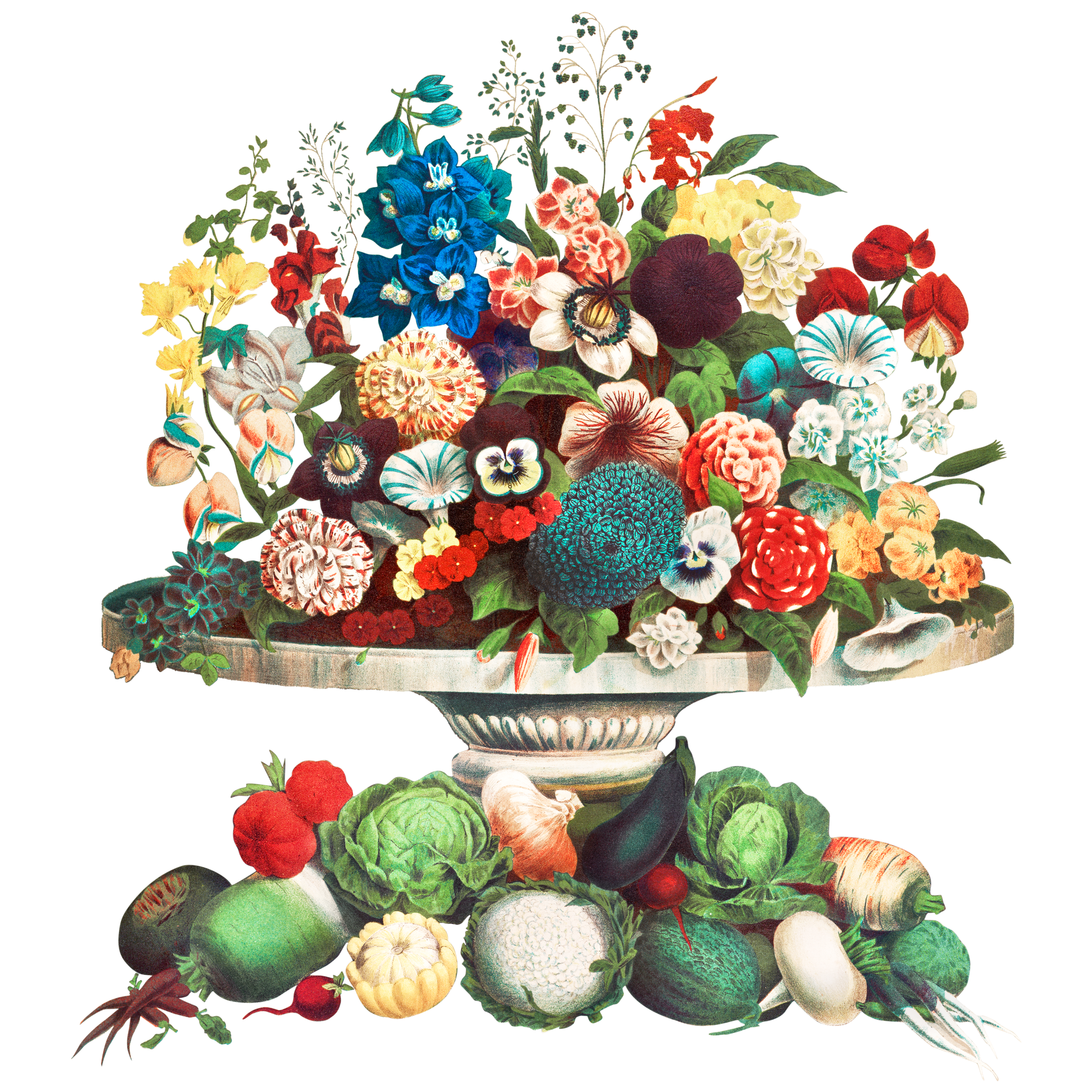Art We Love: Cookmaid
Cookmaid with Still Life of Vegetables and Fruit, Sir Nathaniel Bacon, c.1620-5
“Cookmaid with Still Life of Fruits and Vegetables” is a remarkable painting. Surprisingly, it was painted by Englishman Sir Nathaniel Bacon, the nephew of Sir Francis Bacon, the well-known politician, natural philosopher and gardener. Typically, this genre is most often associated with Dutch and Flemish art, and Bacon is the first to have brought the trend to England. It is thought that Sir Nathaniel, an amateur painter though skilled nonetheless, was exposed to the market and kitchen still life genre during his travels in the Low Countries- that is, the Netherlands, Belgium and Luxembourg.
Every piece of produce depicted in the painting is known to have been growing in England at the time. Bacon himself was an avid gardener on his Suffolk estate, and had a keen interest in horticulture. It’s known that he had a portrait of his gardener hanging in his home at Culford Hall. The first botanic garden was founded in Oxford in 1621, so gardening was a new frontier and Bacon was at the forefront.
What goods do we see?
Curcubits, which is the pumpkin and squash family, abound: a marrow, two type of squash, a pumpkin, the forerunners of summer crookneck squash, an early form of cucumber and a gherkin. Heaped in a basket in the center of the painting we see pea pods, broad beans and the runner bean. The cook maid holds a bunch of white turnips in the crook of her arm, thought to be Milan turnips which were rather rare and likely an extraordinary seed to have possession of. We also see the white root vegetable skirret, a possible parsnip and a carrot beginning to show its orange coloring. The impressive cabbages are thought to be ‘kraut cabbages’, and early ancestor of the savoy cabbage. This variety was often pickled or preserved as sauerkraut.
We see two types of grapes, the paler of which may be a variety that had recently been introduced from North America. The lovely basket of autumnal fruit features apples, pears, quince, figs and peaches. Difficult to overlook are the cantaloupes, which accentuate the voluptuous bust of the cook maid. This suggests a classic motif in artwork which was revived in the renaissance: the erotic associations of fruit and vegetables. These traditions would have been well-known to Bacon, who was well educated and aware of such movements.
Finally, we can’t help but notice the wreath, bounding with wildflowers: chamomile, lady’s smock, field poppy, ox-eye daisy, corn marigold, stitchwort, calendula, chicory, tansy, bindweed, and wild mustard.
We could gaze at this painting for hours- so much to marvel at! Sending you happy wishes for a bountiful harvest this autumn, from Fruit and Flower Shop.
We’ve referenced Barry Juniper, who penned “Sir Nathaniel Bacon: the Vegetable World” in The British Art Journal vol.1 no.2, 2000 as well as the Gardens Trust Blog, which has really wonderful and well researched articles!
Autumn 2020





